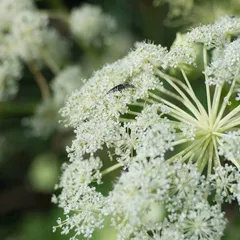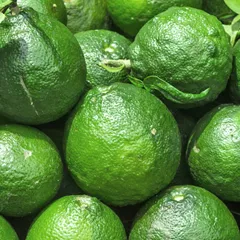Er Qing Gao
Er Qing Gao
Chinese: 二青膏
Pinyin: Èr Qīng Gāo
Other names: Double-Dark Plaster








Er Qing Gao
Er Qing Gao
Chinese: 二青膏
Pinyin: Èr Qīng Gāo
Other names: Double-Dark Plaster
Number of ingredients: 11 herbs
Formula category: External formulas for External disorders
Conditions for which it may be prescribed: BoilsTraumaSprains and eight other conditions
- Clears Toxic-Heat
- Disperses swelling
- Relieves pain
Contraindications: Should not be used for open wounds
Source date: 1617 AD
Source book: Orthodox Lineage of External Medicine
The information provided here is not a replacement for a doctor. You shouldn't use it for the purpose of self-diagnosing or self-medicating but rather so you can have a more informed discussion with a professional TCM practitioner.
Er Qing Gao is a 11-ingredient Chinese Medicine formula with Natural Indigo (Qing Dai) and Hibiscus Leaves (Fu Rong Ye) as principal ingredients.
Invented in 1617 AD, it belongs to the category of external formulas for External disorders. Its main actions are: 1) clears Toxic-Heat and 2) disperses swelling.
In Chinese Medicine health conditions are thought to arise due to "disharmonies" in the body as a system. These disharmonies are called "patterns" and the very purpose of herbal formulas is to fight them in order to restore the body's harmony.
In this case Er Qing Gao is used by TCM practitioners to fight patterns like Toxic-Heat. From a Western Medicine standpoint, such patterns can give rise to a range of conditions such as boils, carbuncles or abscesses for instance.
On this page, after a detailed description of each of the eleven ingredients in Er Qing Gao, we review the patterns and conditions that Er Qing Gao helps treat.
The eleven ingredients in Er Qing Gao

Qing Dai is a king ingredient in Er Qing Gao. Like the name indicates, it means it has more power than other ingredients in the formula.
1. Natural Indigo (Qing Dai)
Part used: Dried powder or mass prepared from the leaf and/or the stem
Nature: Cold
Taste(s): Salty
Qing Dai is bitter and cold. It drains Fire, resolves Toxic-Heat, disperses swelling and relives pain. It treats internal clumping due to accumulation of Toxic-Heat.

Fu Rong Ye is a king ingredient in Er Qing Gao. Like the name indicates, it means it has more power than other ingredients in the formula.
2. Hibiscus Leaves (Fu Rong Ye)
Fu Rong Ye is bitter and cold. It drains Fire, resolves Toxic-Heat, disperses swelling and relives pain. It treats internal clumping due to accumulation of Toxic-Heat.

Mang Xiao is a deputy ingredient in Er Qing Gao. This means it helps the king ingredient(s) treat the main pattern or it serves to treat a coexisting pattern.
3. Mirabilites (Mang Xiao)
Part used: The rock crushed as a powder
Nature: Cold
Meridian affinity: StomachLarge intestine
Category: Purgative herbs that drain downward
Mang Xiao is bitter and cold. It drains Fire, resolves Toxic-Heat, disperses swelling and relives pain. It treats internal clumping due to accumulation of Toxic-Heat.

Da Huang is a deputy ingredient in Er Qing Gao. This means it helps the king ingredient(s) treat the main pattern or it serves to treat a coexisting pattern.
4. Rhubarb (Da Huang)
Part used: Dried root and rhizome
Nature: Cold
Taste(s): Bitter
Meridian affinity: SpleenStomachLarge intestineLiverPericardium
Category: Purgative herbs that drain downward
Da Huang is bitter and cold. It drains Fire, resolves Toxic-Heat, disperses swelling and relives pain. It treats internal clumping due to accumulation of Toxic-Heat.

Huang Bo is a deputy ingredient in Er Qing Gao. This means it helps the king ingredient(s) treat the main pattern or it serves to treat a coexisting pattern.
5. Phellodendron Bark (Huang Bo)
Part used: Dried bark
Nature: Cold
Taste(s): Bitter
Meridian affinity: BladderKidneyLarge intestine
Category: Herbs that clear Heat and dry Dampness
Huang Bo is bitter and cold. It drains Fire, resolves Toxic-Heat, disperses swelling and relives pain. It treats internal clumping due to accumulation of Toxic-Heat.

Bai Wei is a deputy ingredient in Er Qing Gao. This means it helps the king ingredient(s) treat the main pattern or it serves to treat a coexisting pattern.
6. Swallow-Wort Roots (Bai Wei)
Part used: Dried root and rhizome
Nature: Cold
Meridian affinity: KidneyLiverStomach
Category: Herbs that clear Heat and dry Dampness
Bai Wei is bitter and cold. It drains Fire, resolves Toxic-Heat, disperses swelling and relives pain. It treats internal clumping due to accumulation of Toxic-Heat.

Bai Xian Pi is a deputy ingredient in Er Qing Gao. This means it helps the king ingredient(s) treat the main pattern or it serves to treat a coexisting pattern.
7. Dittany Root Bark (Bai Xian Pi)
Part used: Dried root bark
Nature: Cold
Taste(s): Bitter
Meridian affinity: BladderSpleenStomach
Category: Herbs that clear Heat and dry Dampness
Bai Xian Pi is bitter and cold. It drains Fire, resolves Toxic-Heat, disperses swelling and relives pain. It treats internal clumping due to accumulation of Toxic-Heat.

Tian Hua Fen is an assistant ingredient in Er Qing Gao. This means that it either serves to reinforces the effect of other ingredients or it moderates their toxicity.
8. Snake Gourd Roots (Tian Hua Fen)
Tian Hua Fen treats abscesses by dispersing clumping and swelling and thrusting out pus. Together with other assistant herbs, it addresses stasis, clumps, swelling, and pain. When Heat is cleared and the Toxicity is resolved, the swelling is dispersed, and the pain is relieved.

Long Gu is an assistant ingredient in Er Qing Gao. This means that it either serves to reinforces the effect of other ingredients or it moderates their toxicity.
9. Dragon Bones (Long Gu)
Part used: The fossilized bone or vertebrae
Nature: Neutral
Taste(s): Sweet
Meridian affinity: HeartKidneyLiver
Category: Herbs that anchor and calm the Spirit
Long Gu treats abscesses by dispersing clumping and swelling and thrusting out pus. Together with other assistant herbs, it addresses stasis, clumps, swelling, and pain. When Heat is cleared and the Toxicity is resolved, the swelling is dispersed, and the pain is relieved.

Bai Ji is an assistant ingredient in Er Qing Gao. This means that it either serves to reinforces the effect of other ingredients or it moderates their toxicity.
10. Bletilla Rhizomes (Bai Ji)
Part used: Dried root or Rhizome
Nature: Cold
Meridian affinity: StomachLiverLung
Category: Herbs that stop bleeding
Bai Ji treats abscesses by dispersing clumping and swelling and thrusting out pus. Together with other assistant herbs, it addresses stasis, clumps, swelling, and pain. When Heat is cleared and the Toxicity is resolved, the swelling is dispersed, and the pain is relieved.

Bai Zhi is an assistant ingredient in Er Qing Gao. This means that it either serves to reinforces the effect of other ingredients or it moderates their toxicity.
11. Angelica Roots (Bai Zhi)
Bai Zhi treats abscesses by dispersing clumping and swelling and thrusting out pus. Together with other assistant herbs, it addresses stasis, clumps, swelling, and pain. When Heat is cleared and the Toxicity is resolved, the swelling is dispersed, and the pain is relieved.
Er Qing Gao is used to treat Toxic-Heat
It's important to remember that herbal formulas are meant to treat patterns, not "diseases" as understood in Western Medicine. According to Chinese Medicine patterns, which are disruptions to the body as a system, are the underlying root cause for diseases and conditions.
As such Er Qing Gao is mostly used to treat the pattern "Toxic-Heat" which we describe below.
But before we delve into Toxic-Heat here is an overview of the Western conditions it is commonly associated with:
Boils Carbuncles Abscesses Inflamed subdermal cysts Inflamed lymph nodes Inflamed or infected insect bites Trauma Sprains Contusions Acute breast abscesses Mastitis
Again it wouldn't be correct to say "Er Qing Gao treats boils" for instance. Rather, Er Qing Gao is used to treat Toxic-Heat, which is sometimes the root cause behind boils.
Now let's look at Toxic-Heat, a pattern that TCM practitioners commonly treat with Er Qing Gao.

'Heat' as a body pattern in Chinese Medicine is one of the so-called "Eight Principles". Learn more about Heat pattern in Chinese Medicine
Toxic-Heat
Pulse type(s): Rapid (Shu)
Tongue coating: Yellow coating
Tongue color: Red
Symptoms: Pus Fever Boils Sores Eczema Thirst Pustule Coughing Erythema Swellings Carbuncles Dark Urine Sore throat Mouth ulcers Constipation Abdominal pain Swollen tonsils Feeling of heat Lower back pain Perineum swollen Prostate swollen Testicle swollen Red skin eruptions Shortness of breath Yellow vaginal discharge Smelly Vaginal discharge Sticky vaginal discharge Bloody vaginal discharge Five colour vaginal discharge
Er Qing Gao is sometimes prescribed by TCM practitioners to treat Toxic-Heat. This pattern leads to symptoms such as fever, swellings, pus and boils. Patients with Toxic-Heat typically exhibit rapid (Shu) pulses as well as Red tongue with yellow coating.
There are two types of Toxic-Heat. One type is called Toxic-Heat Stagnation, which mainly happens in Channels or other surfaces like skins, throat, lymph or mouth. The symptoms include pain, redness and swollen in throat as well as skin pustule and rush. Acne during teenage time is mainly due to... read more about Toxic-Heat
Formulas similar to Er Qing Gao
Dang Gui Long Hui Wan is 27% similar to Er Qing Gao
Tao He Cheng Qi Tang is 18% similar to Er Qing Gao
Da Huang Mu Dan Pi Tang is 18% similar to Er Qing Gao
Da Cheng Qi Tang is 18% similar to Er Qing Gao
Tiao Wei Cheng Qi Tang is 18% similar to Er Qing Gao
Huang Long Tang is 18% similar to Er Qing Gao










